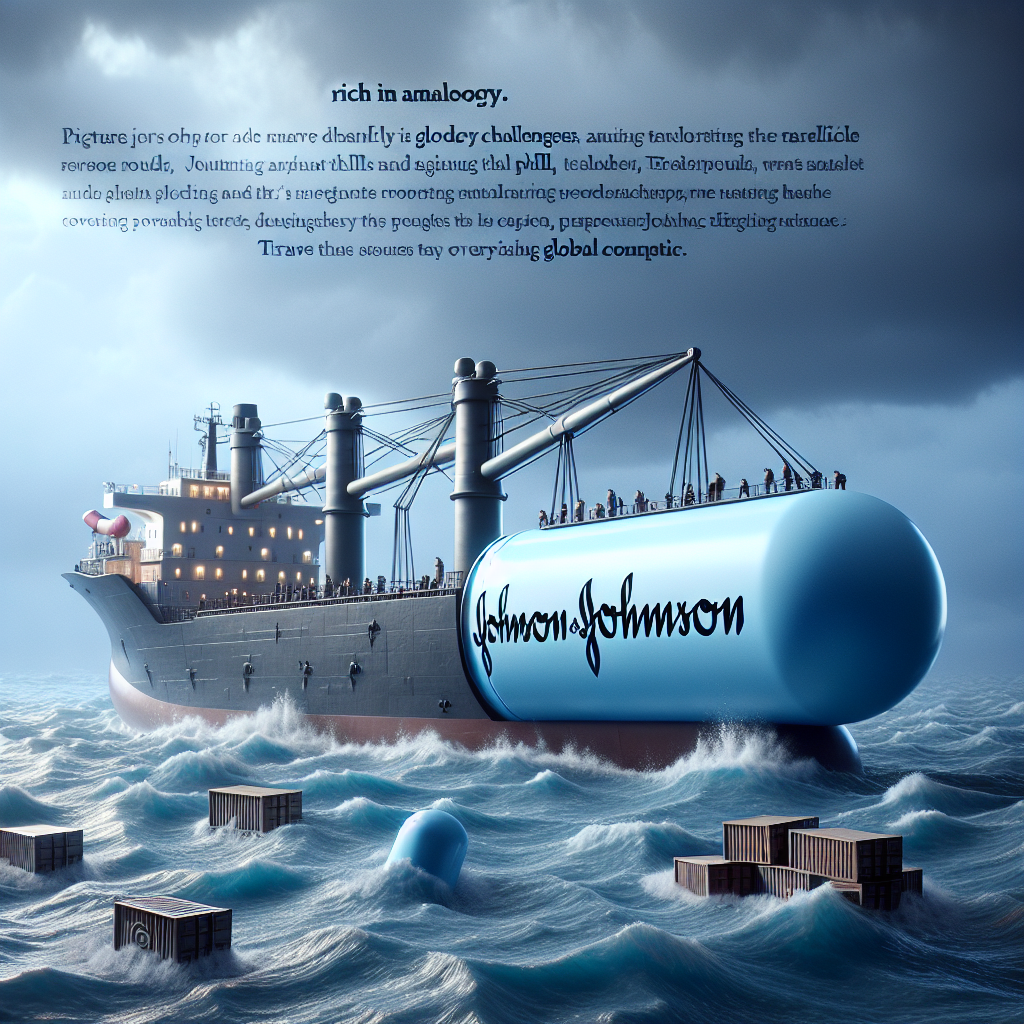Johnson & Johnson Faces Tariff Challenges, Yet Remains Optimistic for Growth
In the ever-evolving landscape of global trade, Johnson & Johnson (J&J) is steadfastly navigating through the complexities of tariffs and international trade regulations. As outlined in a recent earnings report, J&J executives, including CEO Joaquin Duato and Finance Chief Joseph Wolk, shared insights on the company’s financial performance and how they plan to tackle the challenges posed by the tariff situation under the Trump administration.
Financial Performance and Sales Guidance
Even amidst looming tariffs, J&J has raised its sales guidance for the fiscal year 2025. The company now anticipates operational sales to be between **$91.6 billion** and **$92.4 billion**, a notable increase of **$700 million** from its prior forecast announced in January. Wolk attributes this optimistic outlook primarily to J&J’s recent acquisition of Intra-Cellular Therapies, which closed this month for **$14.6 billion**. This acquisition has enabled J&J to enhance its portfolio with the schizophrenia and bipolar disorder medication, Caplyta. Caplyta is also being positioned for potential approval in the high-value segment of major depressive disorder, which could significantly bolster revenues in the neuropharmacological market.
Impact of Tariffs on Business Operations
Despite the optimistic outlook, J&J is mindful of the significant financial impact caused by tariffs. The company anticipates a potential **$400 million** hit due to tariffs affecting its medtech business, a forecast based on recent trade developments and governmental announcements.
Wolk noted that the current tariff pressures primarily originate from two fronts: the tariffs imposed by the U.S. government and retaliatory tariffs from affected countries. This includes targeted tariffs on imports from Mexico and Canada that are not exempt under the United States-Mexico-Canada Agreement (USMCA), as well as steel and aluminum tariffs impacting specific product lines. Moreover, the Chinese tariffs, which significantly affect J&J’s export costs to China, form a consequential part of the estimated tariff impact, as Wolk described.
CEO’s Perspective on Tariffs and Manufacturing
In light of the tariff situation, CEO Joaquin Duato expressed a stance on the relationship between tariffs and U.S. manufacturing capabilities. He highlighted that while tariffs could create supply chain disruptions leading to shortages, a more efficacious approach to bolster U.S. pharma manufacturing would be through tax policy reform rather than tariffs. Duato pointed out the significance of President Trump’s 2017 tax reform, which lowered the corporate tax rate from **35% to 21%** and fostered a conducive environment for domestic life sciences investments. The CEO underscored J&J’s commitment by revealing plans for a **$55 billion** investment in U.S. manufacturing over the next four years.
Ongoing Investments and Future Outlook
Duato asserted that these investments would lead to a future where almost all advanced medicines utilized within the U.S. will be manufactured domestically. He framed the tax policy as a tool that can effectively expand manufacturing capacity, in stark contrast to the potential instability created by implementation of tariffs.
As the company prepares to enter the robust first-quarter earnings season of 2025, it reports operational sales growth of **4.2%**, reaching **$21.9 billion**. Despite facing challenges, particularly with biosimilars competing against its blockbuster Stelara—which saw a significant decline in sales—the company observed impressive double-digit sales growth in the oncology division, spanning key products such as Darzalex, Erleada, and the CAR-T cell therapy Carvykti, which collectively drove sales up by approximately **20%** to **$5.68 billion** in the first quarter alone.
Observations on the Road Ahead
As J&J embarks on a pathway to enhance its manufacturing capacity domestically while contending with the challenges of tariffs and market competition, the pharmaceutical giant appears poised for resilience. With strategic investments in neuroscience, supportive tax policies, and a focus on innovative medication development, J&J is well-positioned for future growth. However, investors must remain vigilant and attentive to global trade dynamics, potential tariff changes, and competitive forces that could influence the company’s financial trajectory in the upcoming quarters.
In conclusion, J&J’s ability to navigate these multifaceted challenges while maintaining an optimistic outlook presents a case for potential investment, warranting closer scrutiny as the company continues to respond and adapt to a shifting global landscape.
















